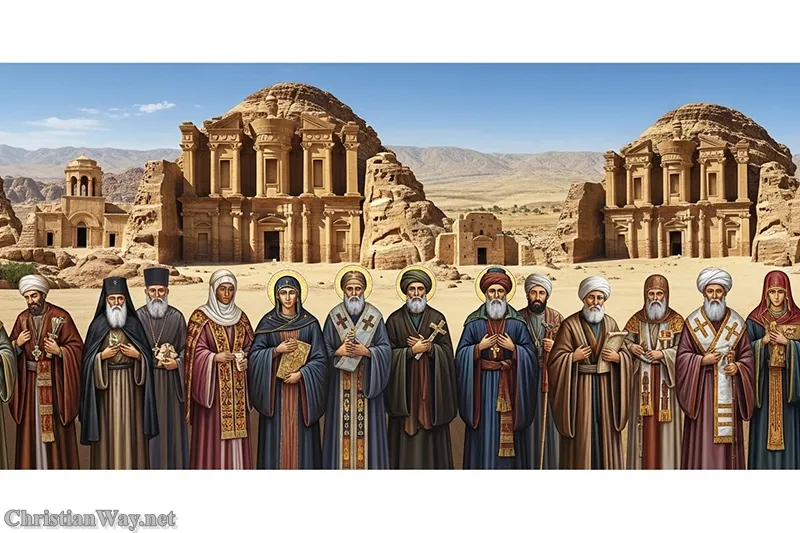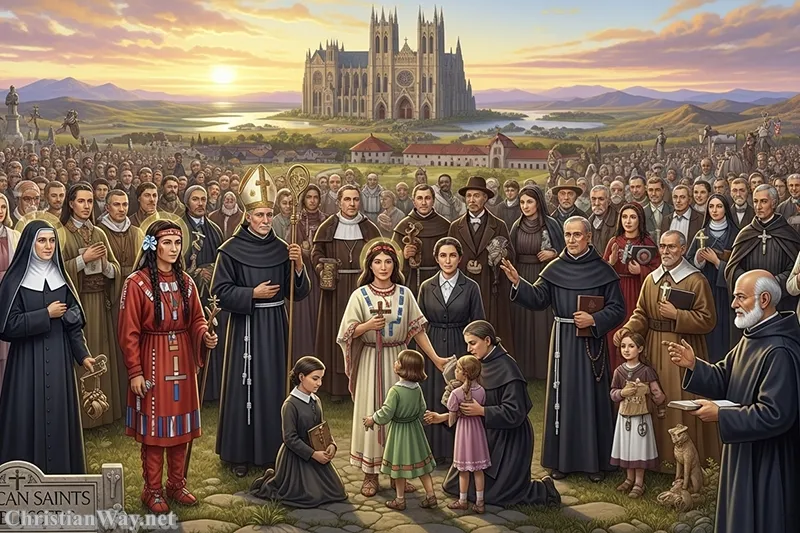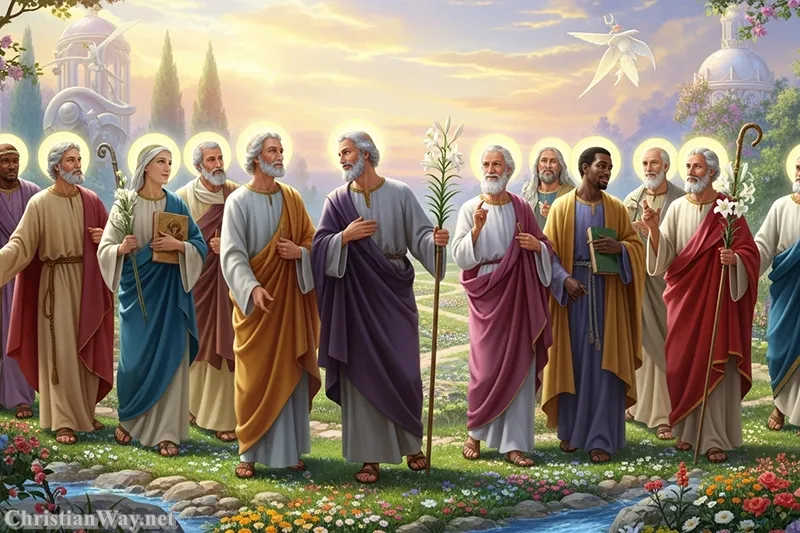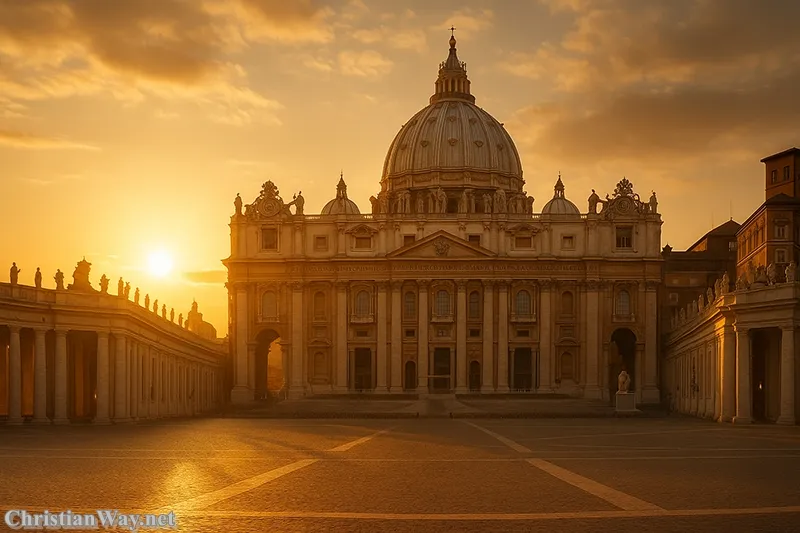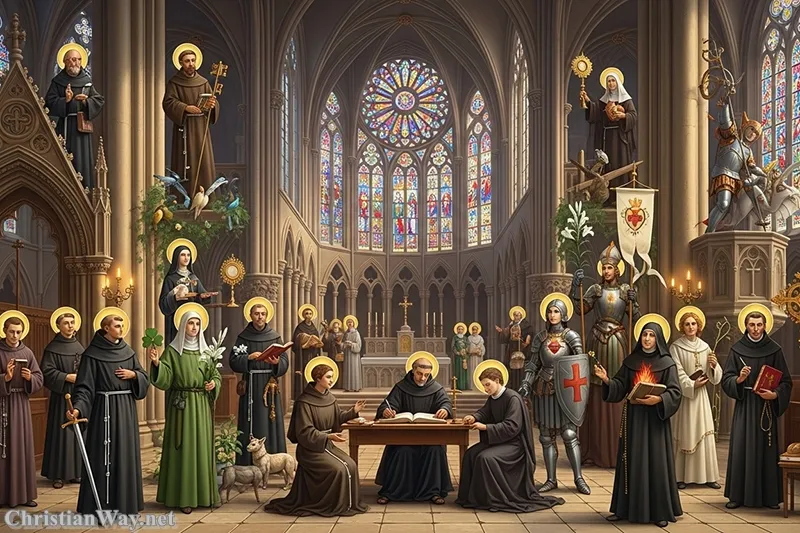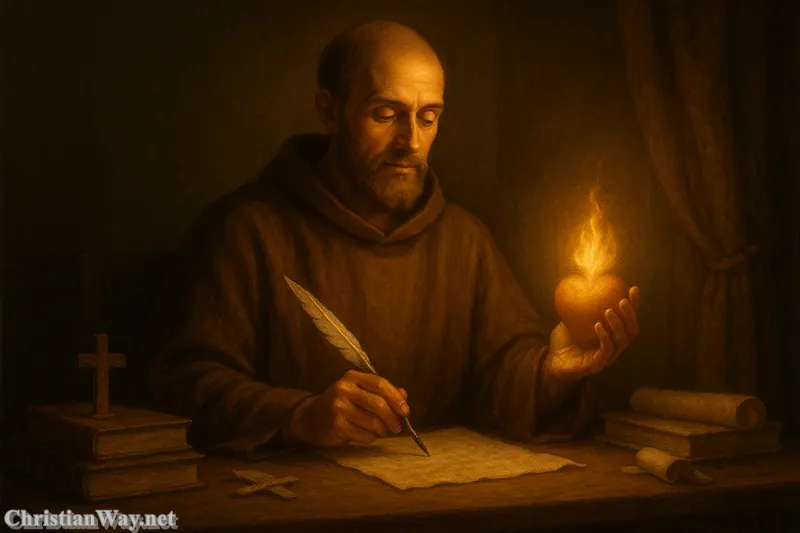Dear friends in Christ,
Every age of the Church is blessed with souls who, by their very lives, seem to re-tell the Gospel in new colors. Among them, few have captured the world’s imagination as deeply as Saint Francis of Assisi. Eight centuries after his birth, he remains one of the most beloved and recognizable figures in all of Christianity — a man who spoke to birds, embraced lepers, and called even the sun and moon his brother and sister.

But behind the gentle legend of the saint of the animals lies a soul of great fire — one who loved Jesus Christ so completely that he became, in his own way, a living image of the Crucified. His story continues to call us, even today, to rediscover the joy of simplicity, the freedom of humility, and the radiant peace that flows from loving God above all things.
Let us walk together through the life, faith, and legacy of this remarkable man — not merely to admire him, but to allow his witness to rekindle our own love for Christ.
A Life Transformed by Grace — The Biography of Saint Francis of Assisi
From the son of a merchant to the servant of the Most High
St Francis of Assisi’s biography begins in the Umbrian town of Assisi, Italy, around the year 1181 or 1182. Born Giovanni di Pietro di Bernardone, he was the son of a prosperous cloth merchant. His father called him “Francesco,” the “Frenchman,” perhaps for his fondness for French culture and song.
Francis’s youth was marked by charm, generosity, and ambition. He dreamed of knighthood, glory, and the admiration of his peers. Yet even amid his revelry, there were early signs of tenderness toward the poor.
At about twenty, he joined a military expedition against the nearby city of Perugia. The battle ended in defeat, and Francis was taken prisoner for a year. That dark confinement began to awaken new questions in his heart. What is honor? What is life for? When he finally returned home, illness and spiritual restlessness followed.
Not long after, as he prepared again for war, a mysterious dream interrupted his plans. He heard a voice ask:
“Francis, who can do more for you, the master or the servant?”
“The master,” Francis replied.
“Then why do you leave the master for the servant?”
He realized the “master” was Christ Himself. From that moment, the restless knight began his conversion — a journey from self-glory to Gospel poverty.
The Moment of Conversion — From Riches to Radical Poverty
Encountering Christ in the leper
One day, Francis met a leper on the road — the very kind of person he once despised and avoided. But something within him had changed. He dismounted, embraced the man, and kissed his hand. He later wrote that this moment was the sweetness of Christ breaking into his soul.
Soon after, he prayed in the little ruined chapel of San Damiano, and before the crucifix heard the voice of Christ say:
“Francis, rebuild My Church, which as you see is falling into ruin.”
Taking the words literally, he began repairing small chapels around Assisi with his own hands. But the Lord’s meaning would later prove much deeper — a call to renew the spiritual life of the entire Church.
His father, furious at what he saw as madness, dragged him before the bishop demanding restitution. There, in a dramatic moment, Francis stripped off his rich clothes and renounced his inheritance, declaring,
“From now on I can say, ‘Our Father who art in heaven,’ for Pietro Bernardone is no longer my father.”
Thus began the life of the Poverello, “the little poor man,” clothed only in humility and joy.
Following Christ Poor and Crucified
Founding the Franciscan Order
Francis wandered the countryside preaching repentance and joy. His message was simple yet revolutionary:
“The Lord gave me brothers,” he said. “We are to live according to the Holy Gospel — nothing more.”
Soon companions gathered around him — men drawn by his radiant freedom and purity. Together they became the first Franciscans, living without property, relying entirely on divine providence.
When Francis brought his small band to Pope Innocent III, the pontiff at first hesitated. But after a dream of Francis holding up the collapsing Lateran Basilica, the Pope recognized God’s hand and approved their way of life. It was the birth of the Order of Friars Minor, and with it, a new breath of renewal for the Church.
The Franciscans spread quickly throughout Europe, preaching peace, tending the poor, and reminding the world that joy comes not from possession but from love.
The Heart of Franciscan Spirituality
Living the Gospel literally
For Francis, the Gospel was not an idea to be studied but a reality to be lived. Every action of his life — from kissing the leper to preaching to the birds — sprang from a literal embrace of Christ’s words.
He loved poverty because Christ was poor.
He loved creation because all things were the handiwork of the Creator.
He loved peace because the Lord of all had come as the Prince of Peace.
His Rule of Life, later approved by the Church, exhorted his brothers to “observe the holy Gospel of our Lord Jesus Christ, living in obedience, without property, and in chastity.”
St Francis of Assisi and the Animals
The universal brotherhood of creation
Perhaps no aspect of St Francis of Assisi’s legacy has touched hearts more than his love for animals and nature. Yet this love was not sentimental. He did not worship creation — he saw in it the reflection of its Maker.
He called the sun “Brother Sun,” the moon “Sister Moon,” the water “Sister Water,” and even death itself “Sister Death.” For him, all creation was a great family singing praise to God. His famous “Canticle of the Creatures” remains one of the earliest works of Italian literature and one of the most beautiful hymns of thanksgiving ever written.
This deep harmony between the saint and creation gave rise to the tradition of the Blessing of Animals on his feast day, October 4, celebrated in parishes around the world.
In our age of ecological concern, St Francis of Assisi, the patron saint of animals and ecology, reminds us that caring for creation is part of loving God — because creation is His gift and mirror.
The Stigmata of St Francis
Sharing the wounds of Christ
In 1224, while praying on Mount La Verna, Francis received a mysterious vision of a Seraph bearing the image of the Crucified. When the vision faded, he discovered on his own body the marks of the stigmata — the wounds of Christ’s Passion.
This mystical gift, unseen in history before him, sealed his conformity to Jesus Crucified. He bore the wounds in humility, hiding them whenever possible, yet they became for the Church a sign of divine intimacy — that a human heart, emptied of self, can truly become one with the Savior’s love.
St Francis and the Sultan — A Mission of Peace
Meeting Sultan al-Kamil
During the Fifth Crusade, while armies clashed outside Damietta in Egypt, Francis crossed enemy lines unarmed, seeking an audience with the Muslim ruler Sultan al-Kamil. To the astonishment of soldiers, he was received not with violence but with respect.
The two men spoke for days about faith, peace, and the mercy of God. Though Francis did not convert the Sultan, their encounter became one of history’s earliest and most beautiful examples of interreligious dialogue — a reminder that love disarms even where war rages.
The Peace Prayer of St Francis
A spirit of reconciliation and mercy
Centuries later, a prayer often attributed to him — though composed in the early 1900s — beautifully captures his spirit:
“Lord, make me an instrument of Your peace.
Where there is hatred, let me sow love;
where there is injury, pardon;
where there is doubt, faith…”
This Prayer of St Francis expresses the very heart of the Gospel: to become channels of Christ’s peace. Whether or not the words were his, their spirit is pure Franciscan — self-forgetful, generous, radiant with love.
In times of division and violence, the prayer remains a bridge between peoples and a light for all who seek reconciliation.
The Friendship of Francis and Clare
The birth of the Poor Clares
Among those most inspired by Francis’s vision was Clare of Assisi, a young noblewoman who heard him preach and felt her own heart burn for Christ. She left her family, took the veil from Francis’s hands, and founded the Order of Poor Ladies, later known as the Poor Clares.
Their friendship was one of mutual holiness — chaste, pure, rooted in the same Gospel fire. Together they embodied the complementarity of masculine and feminine holiness within the Franciscan spirit.
The Final Years and Death of the Saint
By 1226, Francis’s health was failing, worn out by fasting, poverty, and pain. Yet his joy never dimmed. He composed his final verses of the Canticle of the Creatures, praising “Sister Death,” whom he now welcomed as a friend.
Lying on the bare earth near the Portiuncula chapel, he asked his brothers to sing Psalm 141 and to read from the Gospel of John:
“Before the feast of the Passover, Jesus knew that His hour had come…”
He died whispering, “Welcome, Sister Death,” passing into eternal light. Two years later, Pope Gregory IX canonized him as Saint Francis of Assisi. His feast day, October 4, became a celebration of joy, peace, and the glory of God reflected in humility.
The Legacy of St Francis of Assisi — Patron Saint of Peace, Animals, and Italy
A saint for all Christians
Over the centuries, St Francis of Assisi, the patron saint of Italy, has become beloved by Christians of every tradition. His witness transcends denomination because his life was nothing less than the living Gospel.
The Franciscan Order he founded blossomed into many branches:
- the Friars Minor (OFM),
- the Capuchins (OFM Cap),
- the Conventuals (OFM Conv),
- the Poor Clares, and
- the Secular Franciscans for laypeople.
Each continues to live the charism of simplicity, humility, and joy in the Lord.
His influence touches theology, art, literature, and social justice. Pope Francis, who took his papal name from the saint, said that Francis “is the man of poverty, the man of peace, the man who loves and safeguards creation.”
Indeed, in an age hungry for authenticity, St Francis remains a beacon of evangelical truth — showing that holiness is not the privilege of a few but the possibility of all who dare to love.
Pilgrimage to Assisi, Italy — Walking in the Footsteps of Francis
A living sanctuary of faith
Today, Assisi remains one of the most beloved Catholic pilgrimage sites in the world. Pilgrims walk the narrow medieval streets to visit the Basilica of St Francis, where his body rests, adorned with frescoes by Giotto that tell his story in luminous color.
They climb to San Damiano, where he first heard Christ’s call, and to La Verna, where he received the stigmata. Each step through those sacred places echoes with the simplicity of his message: “The Lord is my shepherd; I shall not want.”
To visit Assisi is to breathe peace. It is as if the stones themselves whisper, “Pace e Bene” — Peace and Goodness — the ancient Franciscan greeting.
Lessons from Saint Francis for Today’s World
1. The freedom of simplicity
In a world obsessed with possession, Francis teaches us that joy is found in letting go. Poverty for him was not misery but liberty — the freedom to need nothing but God.
2. The tenderness of mercy
By embracing lepers and forgiving enemies, he revealed that compassion heals more deeply than judgment. Mercy makes us resemble the Heart of Jesus.
3. The reverence for creation
As the first ecological saint, he invites us to rediscover creation not as a resource to exploit but as a brotherhood of beings praising God together.
4. The call to peace
Amid violence and polarization, Francis’s greeting, “Peace and all good!”, remains prophetic. Peace begins not in treaties but in hearts transformed by love.
5. The joy of the Gospel
Francis’s laughter, his songs, his dancing through the streets — all sprang from the overwhelming joy of knowing he was loved by God. Holiness is not gloom but radiant delight.
Reflections from Scripture
The life of St Francis mirrors the words of Jesus:
“Blessed are the poor in spirit, for theirs is the kingdom of heaven.” (Matthew 5:3)
“Consider the lilies of the field, how they grow…” (Matthew 6:28)
“Go, sell what you possess and give to the poor, and you will have treasure in heaven; then come, follow Me.” (Mark 10:21)
Francis took these words literally. They became his roadmap to sanctity. And in doing so, he proved that the Gospel still works — it can be lived, joyfully, even in the modern world.
A Saint for Every Soul
Whether you are drawn to his love for nature, his poverty, or his peace, St Francis touches something universal in the human heart. He is the friend of those who long for simplicity, the comforter of the poor, the patron of animals and ecology, the model for those seeking Christ in everyday life.
His holiness was not found in grand miracles but in small acts of love, done with perfect joy. As he said shortly before his death:
“I have done what was mine to do; may Christ teach you what is yours.”
🕯️ Reflect and Pray
Lord Jesus Christ,
You filled the heart of Saint Francis of Assisi with a burning love for You and for all Your creation.
Grant that, following his example, we may live in humility and peace,
rejoicing in the beauty of Your world and serving the poor with joy.
Teach us to be instruments of Your peace,
so that where there is hatred, we may sow love,
and where there is despair, we may bring hope.
Through Christ our Lord. Amen.
May the gentle light of Saint Francis guide you toward simplicity, peace, and joy in the Lord who makes all things new.
— Fr. John Matthew, for Christian Way


